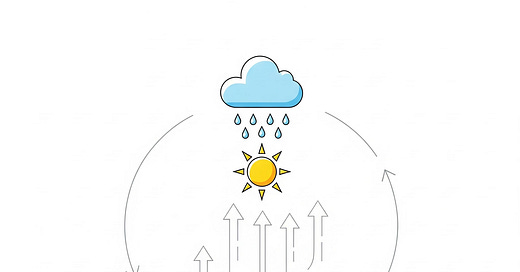Understanding Evapotranspiration for Better Water Management
Why Knowing How Plants "Sweat" Helps Save Water
On a farm, water is gold. Using it wisely is crucial for both the health of your crops and the health of your planet. One of the most important concepts in smart water management is evapotranspiration, or ET. It might sound complicated, but it's just a fancy word for how plants and the ground lose water to the air. Understanding ET helps you give your plants exactly what they need, no more, no less.
What is Evapotranspiration (ET)?
Think of ET as the total water "lost" from your field to the atmosphere. It's actually made of two main parts:
Evaporation: This is when water turns into vapor and rises directly from the soil surface or from any standing water (like after rain or irrigation). Imagine a wet sidewalk drying up – that's evaporation.
Transpiration: This is when plants "sweat." Water taken up by the plant roots travels through the plant and exits as vapor through tiny pores on their leaves. This process helps cool the plant and move nutrients.
So, Evapotranspiration (ET) = Evaporation + Transpiration. It's the combined amount of water moving from the land (soil and plants) back into the air.
Why is ET Important for Water Management?
It tells you how much water your crops actually need. Instead of guessing or just following a fixed schedule, ET helps you know the real water demand of your plants. This is crucial because different crops, at different growth stages, and in different weather conditions, will have different ET rates.
It helps prevent over-watering. If you water more than what your plants and soil lose through ET, you're wasting water. This excess water can run off, seep deep into the ground (taking nutrients with it), or lead to waterlogged conditions that harm roots.
It helps prevent under-watering. If you don't provide enough water to meet the ET demand, your plants will suffer from stress, which can lead to stunted growth, reduced yields, or even crop failure.
It saves you money and resources. Less wasted water means lower pumping costs, less energy use, and healthier crops that perform better.
How to Use ET for Smarter Irrigation:
ET Data Sources: You don't need fancy equipment to estimate ET. Many local weather stations, agricultural extension services, or online tools provide daily reference ET (ETo) values for your area. These values tell you the ET for a "standard" grass field under current weather conditions.
Crop Coefficients (Kc): To get the actual ET for your specific crop, you multiply the reference ET (ETo) by a crop coefficient (Kc). This Kc factor accounts for the specific water use of your crop at its current growth stage. (e.g., ETc = ETo x Kc). Agricultural guides provide Kc values for different crops.
Soil Moisture Monitoring: Combine ET calculations with soil moisture sensors or even simple manual checks ("feel test"). This confirms if your irrigation is effectively meeting the ET demand and helps fine-tune your schedule.
Irrigation Scheduling: Use the calculated ET (ETc) to decide when and how much to water. For example, if your crop loses 5 mm of water through ET today, you know you need to replace at least that much to keep it healthy.
Conclusion: Watering with Knowledge
Understanding evapotranspiration empowers you to be a more efficient water manager on your farm. It's about moving from guesswork to a scientific approach, giving your plants precisely what they need, when they need it. By embracing ET-based irrigation, you're not just saving water; you're building a more sustainable and productive farm for the future.
What's your biggest challenge in managing water on your farm?
#Evapotranspiration #WaterManagement #SmartIrrigation #SustainableFarming #CropWaterUse #WaterConservation #PrecisionAgriculture #FarmEfficiency #FarmersChat #Agriculture #VishalRajput




